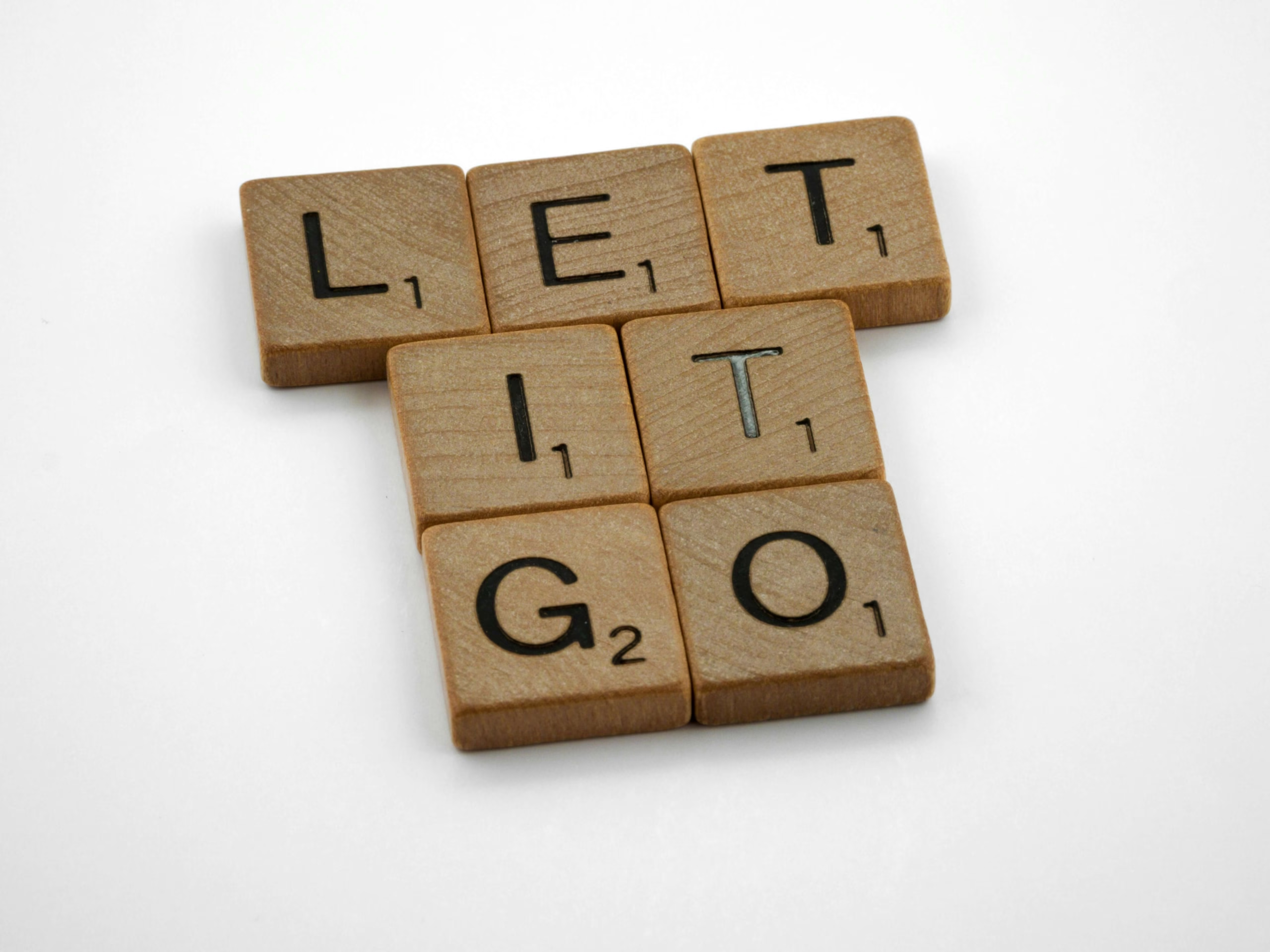To forgive is not to forget, to excuse, or to reconcile. It is to make a courageous, compassionate choice to release the pain of an old wound so that you can move forward with greater freedom. The greatest misconception about forgiveness is that it’s a gift you give to someone else. The truth is, forgiveness is a radical act of self-care; a gift you give to yourself. It is a decision to stop letting the past consume your present. This blog will guide you through the art of forgiveness, not as an act of weakness, but as an act of strength. We’ll break down the process of letting go of resentment into simple, actionable steps, and show you how this profound inner work can finally give you the peace you deserve.
Relevant blog to read: The Daily Dose of ‘I See You’: Simple Ways to Show Your Partner Appreciation Every Day
What Is Forgiveness?
At its core, forgiveness is a conscious decision to let go of resentment and the desire for revenge or retaliation. It is a process of releasing the negative emotional charge associated with a past hurt.
It is crucial to understand what forgiveness is NOT:
- It is not forgetting: Forgiveness does not mean erasing the memory of a painful event. The memory remains, but its power to control your emotions diminishes.
- It is not excusing or condoning: It does not mean you are saying the other person’s behavior was acceptable. You can hold a person accountable and still choose to forgive.
- It is not necessarily reconciliation: Forgiving someone does not mean you must re-engage with them. In a toxic or unsafe situation, forgiving from a distance is often the healthiest choice.
- It is not a quick fix: It is a process that requires patience, honesty, and self-compassion.
Why Forgiveness Is an Act of Self-Love
Holding onto anger and resentment is like carrying a heavy backpack everywhere you go. It weighs you down, exhausts you, and limits your ability to experience joy. Forgiveness is the choice to put that backpack down.
The science is clear: Holding onto resentment triggers a chronic stress response in your body, leading to:
- Elevated Cortisol: Prolonged anger keeps cortisol levels high, which can lead to inflammation and health issues.
- Mental Erosion: Ruminating on past hurts consumes mental energy, leading to a diminished capacity for joy and focus.
- Emotional Baggage: Unresolved anger can poison new relationships and prevent you from living fully in the present.
By choosing forgiveness, you are choosing to prioritize your own peace and well-being over the need to see another person suffer. You are healing yourself first.
A Step-by-Step Guide to Letting Go
The journey to forgiveness is a personal one. Here are six compassionate steps to guide you.
1. Acknowledge and Validate Your Pain
You cannot forgive what you haven’t acknowledged. Before you can let go, you must first give yourself permission to feel the pain.
- How to: Don’t dismiss your feelings with phrases like “It’s not a big deal.” Instead, say to yourself, “I am hurting, and that’s okay.”
- Why it matters: Validating your pain is the first step toward releasing it.
2. Understand Your Anger and Its Impact
Take a moment to understand what your anger is doing to you. What is it costing you in terms of your peace, your joy, and your relationships?
- How to: Ask yourself: “What is my resentment doing to me, not to them?” “Is holding onto this anger serving me?”
- Why it matters: This helps you see that the primary victim of your anger is often yourself.
3. Shift Your Perspective
This doesn’t mean you have to like or excuse the other person’s behavior. It means trying to see the situation from a broader, more human perspective.
- How to: Consider the other person’s humanity. What might have been happening in their life at that time? Could their behavior have stemmed from their own pain or insecurity?
- Why it matters: This act of perspective-taking can help soften your anger and shift the narrative from a personal attack to a human mistake.
4. Make a Conscious Choice to Forgive
Forgiveness is a choice, not a feeling. You don’t have to wait until you feel ready to forgive; you can simply decide to. The feelings will follow the decision.
- How to: Write down a forgiveness statement. “I, [Your Name], forgive [The Other Person’s Name] for [The Hurt]. I am releasing this from my heart for my own peace.”
- Why it matters: This conscious declaration breaks the cycle of resentment and begins the healing process.
5. Release the Need for Revenge
The desire to see someone else suffer is a heavy burden. Releasing that desire is the final act of letting go.
- How to: This is an ongoing process. When thoughts of revenge or anger arise, acknowledge them without judgment and gently remind yourself of your choice to forgive.
- Why it matters: It frees up the emotional energy you were spending on a negative outcome and allows you to reinvest it in a positive one.
6. Redefine Your Relationship
Forgiveness doesn’t mean your relationship has to go back to what it was. You can forgive and still set firm boundaries.
- How to: Decide what kind of relationship you want to have with the person, if any. This could be no contact, limited contact, or a new, redefined connection based on mutual respect.
- Why it matters: Forgiveness allows you to move on in a way that is healthy and safe for you.
Well-being Practices as Your Allies
These practices can help you navigate the emotional turbulence of forgiveness:
Journaling:
A safe, private space to vent your anger, process your pain, and track your progress. These prompts are designed to guide the reader through the emotional journey of forgiveness, helping them to process their feelings and find clarity.
- Prompt 1: Acknowledging the Pain:
- “Write a letter to the person you need to forgive. Write down all the anger, hurt, and pain you feel. Don’t hold back. This letter is for you, and you never have to send it.”
- Prompt 2: Understanding the Cost:
- “What is my resentment costing me today? What emotional energy, joy, or opportunities am I missing out on because of this anger?”
- Prompt 3: Shifting Perspective:
- “Imagine the person you need to forgive is a child. What pain or fear might have led them to act the way they did? (Note: This is not about excusing their behavior, but about understanding its human origins.)”
- Prompt 4: The Act of Choice:
- “What would a life free from this resentment look like? Describe in detail how you would feel, what you would do, and what new opportunities would be open to you.”
- Prompt 5: Practicing Self-Forgiveness:
- “What is one thing I am forgiving myself for today? What small act of kindness can I show myself to honor this forgiveness?”
Mindfulness:
Helps you to observe the feelings of anger and resentment without judgment, giving you the pause needed to choose to let go.
Affirmations:
Affirmations like, “I am releasing all resentment,” “I choose peace,” or “I am worthy of a life free from anger,” can help rewire your brain and reinforce your decision to forgive.
- “I choose to release all resentment and anger.”
- “I am ready to let go of this pain for my own peace.”
- “My heart is open to healing and compassion.”
- “I forgive myself for any pain I’ve held onto.”
- “I am a person of strength, and I choose to forgive.”
- “I am free from the burden of the past.”
- “I honor my anger, and now I am ready to release it.”
- “Forgiveness is a gift I give to myself.”
- “I choose to move forward with grace and peace.”
- “I am worthy of a life free from bitterness.”
Relevant blog to read: 50+ Forgiveness Affirmations to Find Freedom
Boundary Setting:
The skills you learn in forgiveness give you the strength to be more assertive and set healthy boundaries in all your relationships, preventing future hurts.
Relevant blog to read: 100 Boundaries and Self-Respect Affirmations for Emotional and Mental Strength
Therapy:
If you are struggling with a deep wound or trauma, seeking professional help from a therapist is a profound act of self-love and courage.
Vision Board:
A vision board for forgiveness is not about the past; it’s a powerful tool for manifesting a future free from its chains.
- Visuals:
- A calm lake or an open sky (representing peace and clarity).
- A person running with arms outstretched (representing freedom and release).
- Images of hands letting go of a rope or a chain (a metaphor for releasing resentment).
- A photo of a vibrant, healthy plant (representing personal growth).
- Images of people laughing and connecting (representing restored relationships or the joy of new ones).
- Words/Phrases:
- “Let Go and Grow”
- “My Peace Is My Priority”
- “I Am Free”
- “I Choose Joy”
- “New Beginnings”
Relevant blog to read: Vision Board Journal: Combine Journaling and Visual Manifestation for Deeper Impact
Final Thoughts: The Unshackled Life
The art of forgiveness is not an easy one, but it is one of the most freeing acts you can perform for your own well-being. By choosing to let go of resentment, you are not erasing the past; you are simply refusing to let it define your future. You are unshackling yourself from a burden you never deserved to carry. This compassionate act of self-love is the first step toward reclaiming your peace, your joy, and your freedom.
Frequently Asked Questions
A. No. Forgiveness is not about forgetting. It’s about remembering without the emotional pain and anger that used to accompany the memory.
A. That’s okay. The key is to acknowledge your feelings and gently begin the process of letting go. Forgiveness is a choice, not an emotion.
A. Yes. Forgiveness is for you, not for them. You can forgive a person even if they never apologize or acknowledge the pain they caused.
A. Start by acknowledging your pain. Give yourself permission to feel angry and hurt, and then use a practice like journaling to process those feelings.
A. Yes. Holding onto chronic anger and resentment raises cortisol levels, which can lead to inflammation and stress-related health issues. Forgiving can reduce this stress.
A. No. You can forgive a person and still choose to set firm boundaries or have no contact with them if it is a healthy choice for you.
Author’s note
Thank you for taking the time to focus on your well-being and for being your own cheerleader in this journey called life. I truly appreciate you for choosing to invest in yourself today, and I’m honored that you spent a part of your day here. Remember, every small step you take matters, and you’re doing an amazing job. Keep going—you’ve got this!
💛 Support Our Mission
If you find our content helpful and inspiring, consider supporting us with a small donation.
Your kindness helps us grow, write more meaningful articles, and reach more hearts.
You can donate via PayPal — every bit counts! 🙏





